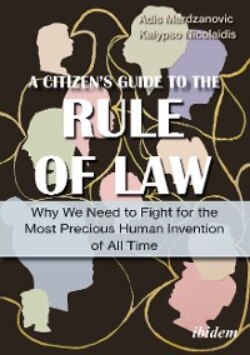Читать книгу A Citizen’s Guide to the Rule of Law - Kalypso Nicolaidis - Страница 15
Going deep: Love and everyday gestures
ОглавлениеTo know what we mean by the rule of law as a “deep concept”, we need to start by treating the rule of law as if it were a loving relationship between two people. There is the deep love that profoundly binds them together, and then there are the everyday gestures through which this love is expressed.
With the rule of law, there’s the larger principle, the core. We need to know what norms constitute this core and what functions they perform. That’s the love part. Once we have clarity on that, we need to figure out how the larger principle is to be applied in social and political orders. We need to know what the core means concretely for living together. That’s the everyday part.
So, let us start with the first task, thinking about the larger principle, the love. Here, a problem occurs that is very central to our larger argument in this book and makes this next section somewhat complicated. Bear with us, please.
We may approach the rule of law from different viewpoints. Aspects of it are philosophical, others are sociological, political, or legal. Trying precisely to define what we are talking about is thus difficult, as it varies slightly from one perspective to the other. Indeed, looking at the vast rule of law literature that has been produced so far, we find that actual definitions about the rule of law are either absent, or they depend on what the writer wanted to achieve or the era or tradition in which s/he writes.6 Debates among legal theorists abound so that one may be forgiven to think that all these smart people have actually no idea what they are talking about.7 After all, if you cannot even agree on what your subject is, how can you determine whether it’s there or not?
Of course, all these people know very well what they are talking about. They are smart and have done some serious thinking. But they sometimes lack the ability to make their thoughts clear to the rest of us. They have a problem of communication rather than one of understanding.
The challenge in defining the larger principle of the rule of law is quite straight-forward; actually, there is one fundamental point upon which all these lawyers, philosophers, sociologists, and political scientist can agree:
The rule of law is a “rule about the importance and priority of legal rules” for a particular society.
Sounds relatively straightforward: The rule of law is simply the command to obey the laws.
But that can’t be all there is. The rule of law concerns itself with the law—but is at the same time something above the law? This definition indeed “carries a whiff of paradox, a circular sense of justification”.8 There seems to be no distinction between the love part, and the everyday part of the rule of law. Yet we need those two aspects of the rule of law to somehow come together in a definition, if we wish to make the concept broadly understood. But how?
